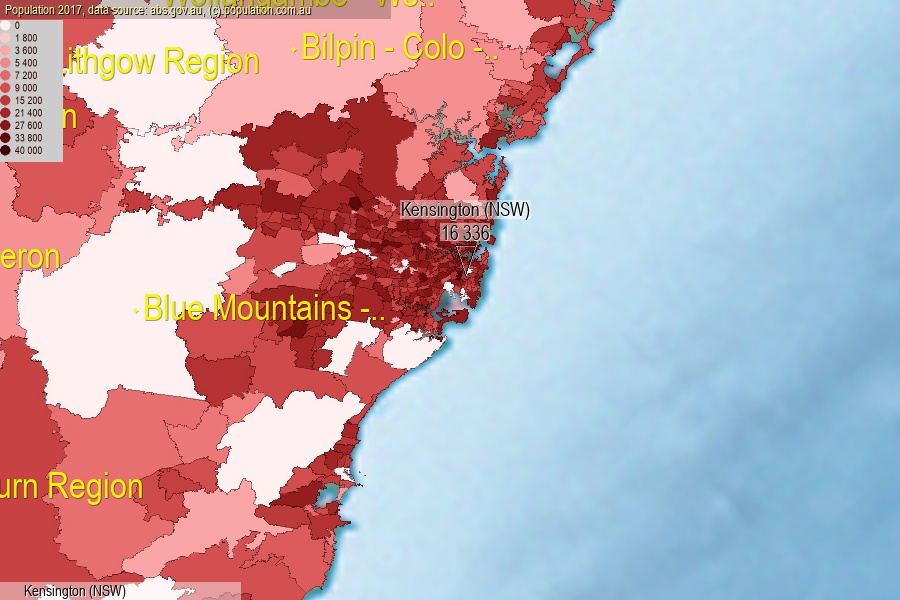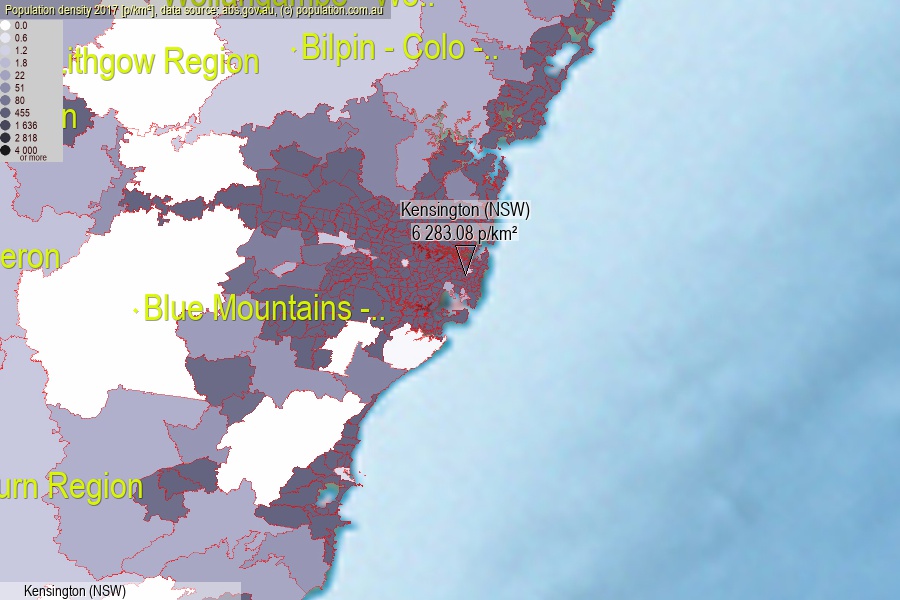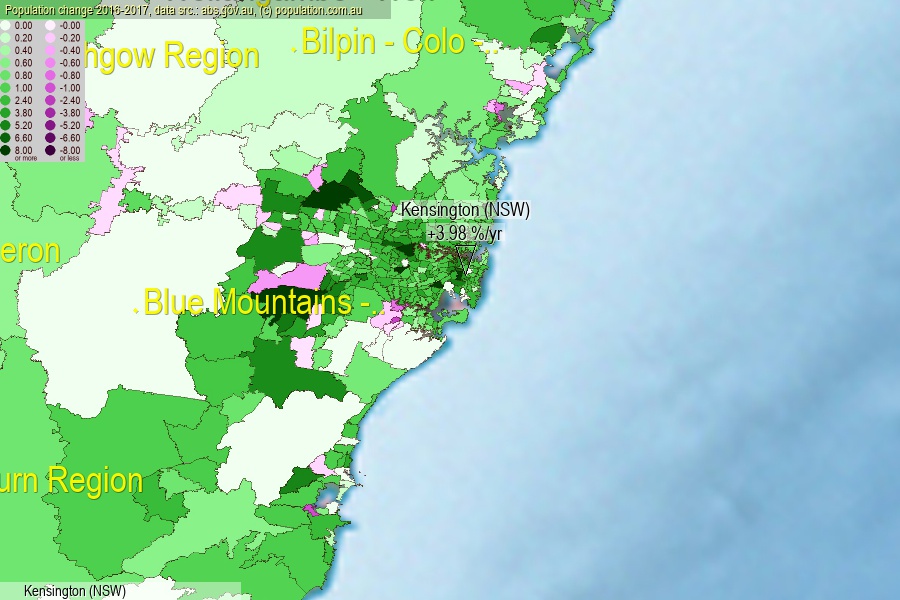 population.com.au
population.com.auLast official estimated population of Kensington (NSW) (as Statistical Area Level 2) was 16 336 people (on 2017-06-30)[2]. This was 0.07% of total Australian population and 0.205% of NSW population. Area of Kensington (NSW) is 2.60 km², in this year population density was 6 283.08 p/km² . If population growth rate would be same as in period 2016-2017 (+3.98%/yr), Kensington (NSW) population in 2025 would be 22 319. [0]



Click to enlarge. Kensington (NSW) is located in the center of the images.
Population [people], population density [p./km²] and population change [%/year] [2]
View borders » (new window) [4]
[2001-2002] +0.06 %/Yr.
[2002-2003] -0.66 %/Yr.
[2003-2004] -1.37 %/Yr.
[2004-2005] +0.24 %/Yr.
[2005-2006] +2.86 %/Yr.
[2006-2007] +6.24 %/Yr.
[2007-2008] +3.57 %/Yr.
[2008-2009] +3.44 %/Yr.
[2009-2010] +3.33 %/Yr.
[2010-2011] +2.17 %/Yr.
[2011-2012] +2.71 %/Yr.
[2012-2013] +4.64 %/Yr.
[2013-2014] +2.86 %/Yr.
[2014-2015] +2.14 %/Yr.
[2015-2016] +2.45 %/Yr.
[2016-2017] +3.98 %/Yr.
[0] Calculated with linear interpolation from officially estimated population
[1] Read more about SA2 and Australian Statistical Geography Standard (ASGS) on abs.gov.au
[2] Population data from Australian Bureau of Statistics (Population and density: 2017; change: 2016-2017)
[3] Digital Boundaries: Australian Statistical Geography Standard (ASGS) 2016.
[4] Border coordinates are simplifyed using Ramer-Douglas-Peucker algorithm.